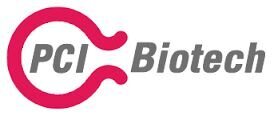First cancer patient included in PCI Biotech's Phase I/II trial of Amphinex®
Oslo, 24 August 2009 - PCI Biotech Holding ASA today announced that the first cancer patient has received treatment in the Phase I/II trial with the lead candidate Amphinex®, used in PCI Biotech's unique technology for targeted enhancement of therapeutics in cancer treatment. The patient was treated at the University College Hospital (UCH) in London. PCI's proprietary photosensitiser Amphinex® is in this study combined with the cytotoxic agent bleomycin. When activated by light, Amphinex® promotes effective delivery of large therapeutic molecules such as bleomycin through triggered endosomal release. The trial will investigate a broadly representative spectrum of cancers including breast and head & neck cancer, to demonstrate the safety and potential of this new approach
The primary objective of this study is to assess the maximum tolerated dose of Amphinex®, in PCI treatment with bleomycin. Secondary objectives include determination of the antitumor activity of Amphinex® when used in combination with bleomycin, as well as its pharmacokinetics.
Dr. Colin Hopper, Principal Investigator at UCH, said: "At UCH we are dedicated to high quality patient care and we have extensive experience in the use of photodynamic therapy to treat cancer patients. PCI is a very exciting new approach in photodynamic medicine that has shown great promise in preclinical studies. We are very proud of being the first centre to move this new technology into the clinic."
Per Walday CEO of PCI Biotech, comments: "This first in man trial is an important step forward for the company. We are confident that our approach addresses one interlinked major challenge in oncology - how to deliver therapeutics with large enough loads to effectively destroy tumours while at the same time reducing the risk of damaging healthy cells. Bleomycin is ideal for demonstrating this - there is no doubt about its therapeutic potential, but until now delivery problems and associated toxicity have prevented the realisation of its full potential. We expect to have preliminary results of the trial early in 2010."
In addition, whilst our main initial focus is cancer, we strongly believe the PCI technology also has potential to improve the effect of emerging treatments such as gene therapy and therapies based on nanotechnology or on biotechnological principles. In particular, we are looking at siRNA through projects funded by EU and by the Norwegian Research Council.
"PCI Biotech is a Norwegian biopharmaceutical company developing a novel light directed drug delivery system based on its patented photochemical internalisation (PCI) technology. Originating from world leading research at the Norwegian Radium Hospital, the PCI method involves first injecting target cells with a photosensitiser. Therapeutic molecules are then delivered to the cells and when these are illuminated the cells' endosomes are ruptured to allow successful uptake.
PCI can enhance the delivery of all molecules taken into the cell by endocytosis. This includes most types of macromolecules, drugs carried by antibodies or nanoparticles, as well as some small molecule drugs. In addition, PCI enables the use of more toxic compounds by restricting their effects to the target site.
PCI Biotech follows a dual strategy of using its technology to improve the effect both of existing drugs and for emerging treatments such as gene therapy. PCI Biotech's first clinical study couples the proven photosensitiser Amphinex® with the cytotoxic agent bleomycin. Other studies are planned for the delivery of other cancer drugs in relevant indications.
Contact information:
PCI Biotech Holding ASA, Hoffsveien 48, N-0377 Oslo v/Per Walday, CEO, pw@pcibiotech.no, Mobile: +47 917 93 429
Bernt-Olav Røttingsnes, CFO, bor@pcibiotech.no, Mobile: +47 913 47 021
